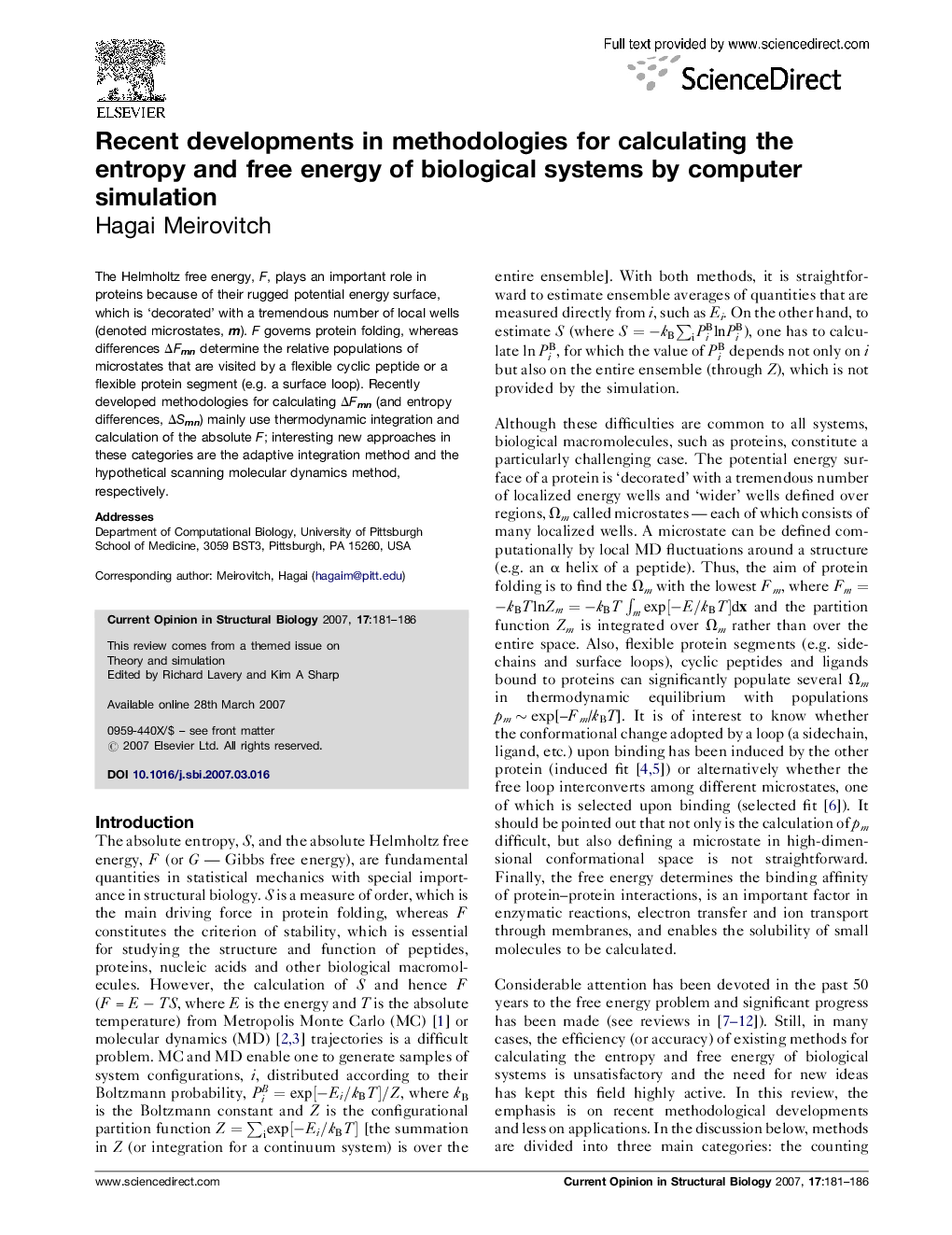| Article ID | Journal | Published Year | Pages | File Type |
|---|---|---|---|---|
| 1979803 | Current Opinion in Structural Biology | 2007 | 6 Pages |
Abstract
The Helmholtz free energy, F, plays an important role in proteins because of their rugged potential energy surface, which is ‘decorated’ with a tremendous number of local wells (denoted microstates, m). F governs protein folding, whereas differences ΔFmn determine the relative populations of microstates that are visited by a flexible cyclic peptide or a flexible protein segment (e.g. a surface loop). Recently developed methodologies for calculating ΔFmn (and entropy differences, ΔSmn) mainly use thermodynamic integration and calculation of the absolute F; interesting new approaches in these categories are the adaptive integration method and the hypothetical scanning molecular dynamics method, respectively.
Related Topics
Life Sciences
Biochemistry, Genetics and Molecular Biology
Biochemistry
Authors
Hagai Meirovitch,
